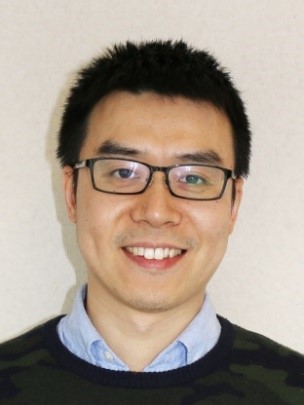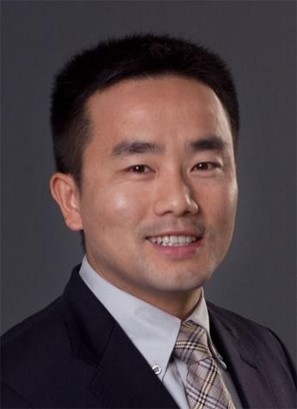



讲座主题:Analysis and Design of Near-Field Couplers for Wireless Charing Applications
讲座人:Dr. Minfan Fu, ShanghaiTech University, China
Dr. Ming Liu, Shanghai Jiao Tong University, China
Dr. Chengbin Ma, Univ. of Michigan-Shanghai Jiao Tong Univ. Joint Institute, China
讲座摘要:
Electromagnetic waves serve as the information and energy carrier to propagate in free space. This fundamental theory leads to the revolution in wireless communication and power delivery. Based on the breakthrough efforts from Nikola Tesla, the wireless power transfer (WPT) techniques have been well studied and developed in the last decades. Currently, the end user wants to cut off the last wire (i.e., electrical charging wire) so that for the first time, information and power can be obtained ubiquitously through the air. WPT not only provides an easier and safer experience of daily charging processes, but also enables a new direction in the management of electrical power. Especially, it offers an alternative solution without the need for significant improvements in battery technology.
The far-field methods dominate the applications of wireless communication, and the benefits of radiative electromagnetic waves are fully utilized for long-distance transfer. Similar concepts and techniques can also be developed for power transfer, but these systems usually suffer from the low efficiency. Without this concern, the near-field methods are famous for high-efficiency mid-distance power transfer, and these benefits make them popular in various applications, such as consumer electronics, industrial automatics, and transportation systems. There are mainly two types of near-field WPT techniques, i.e., inductive power transfer (IPT) and capacitive power transfer (CPT). They both have own merits and suitable application scenarios. From the circuit point of view, both IPT and CPT systems include the active inverter and rectifier (for the conversion between ac and dc) and the passive compensation network and coupler (for the conversion between ac and ac). The main difference is the coupler structure.
In this tutorial, we plan to comprehensively summarize and explain our pioneer work on the near-field couplers. As described in the following outline, this tutorial begins with an overview of the major challenges and limitations of the present couplers. The inductive couplers based on multiple coils are firstly discussed. The associated challenges like complicated cross coupling, power decoupling are mentioned and addressed. A voltage equalizer using the multiple-receiver coupler are used to illustrate the benefits of inductive coupling. In order to improve user experience, several emerging inductive couplers are also introduced in this tutorial, including six-degree of freedom transmitter and modular inductive coupler. Besides, the near-field electric coupling approaches are mentioned and discussed. A uniform comparison standard is built to compare the coupling performance of several capacitive couplers, like horizontal coupler, vertical coupler, and interleaved coupler. A circular coupler with stable coupling is shown to well address the misalignment issue. Finally, this tutorial continues to build a uniform modeling and compensation theory to explain the duality between IPT and CPT.
As mentioned above, this tutorial is tentatively organized as follows:
1. Overview of near-field coupler
1.1 Applications
1.2 Technical Challenges
2. Inductive coupler with multiple receivers
2.1 Cross coupling compensation
2.2 Multi-receiver power decoupling design
2.3 Multi-receiver IPT based voltage equalizer
3. Modular and extendable inductive coupler
3.1 Six-degree of freedom inductive transmitter
3.2 Modular reconfigurable IPT coupler
4. Capacitive coupler
4.1 Conventional horizontal coupler and vertical coupler
4.2 Interleaved capacitive coupler
4.3 Circular capacitive coupler
5. Uniform model and compensation theory
5.1 Induced voltage/current source model
5.2 High-order compensation
6. Conclusions and future prospects
讲座人介绍:
Minfan Fu received the B.S., M.S., and Ph.D. degrees in electrical and computer engineering from University of Michigan-Shanghai Jiao Tong University Joint Institute, Shanghai Jiao Tong University, Shanghai, China in 2010, 2013, and 2016. He is currently an Assistant Professor at School of Information Science and Technology (SIST), ShanghaiTech University, Shanghai, China. Between 2016 and 2018, he held a postdoctoral position with the Center for Power Electronics Systems (CPES), Virginia Polytechnic Institute and State University, Blacksburg, VA, USA.
His research interests include megahertz wireless power transfer, high-frequency power conversion, high-frequency magnetic design, and applications of wide-band-gap devices. He has ten years of experience in Multi-MHz wireless power transfer (WPT) research. His first three IEEE journal papers on MHz WPT, which were published in 2014 and 2015, have been world widely cited 148, 134, and 115 times. At CEPS, he worked with Dr. Fred C. Lee, a National Academy of Engineering member and IEEE Fellow, and extended his expertise to the field of high-frequency power electronics. He developed the next-generation GaN-based DC-DC module. Compared to the state-of-the-art products, the peak efficiency and power density have increased from 91% to 96% and from 88 W/inch3 to 130 W/inch3. He holds one US patent and has published 46 papers in prestigious IEEE journals and conferences, such as IEEE Trans. Industrial Electronics and IEEE Trans. Power Electronics. Currently, his total google scholar citations exceeds 770, and one of his first papers was listed by Essential Science Indicators (ESI) as top 1% highly cited papers in engineering and publication years.
Ming Liu received the B.S. degree in mechatronic engineering from Sichuan University, Sichuan, China, in 2007, and the Ph.D. degree in electrical and computer engineering from the University of Michigan-Shanghai Jiao Tong University Joint Institute, Shanghai Jiao Tong University, Shanghai, China, in 2017. From 2017 to 2020, he was a Postdoctoral Research Fellow with the Department of Electrical
Engineering, Princeton University, USA. He joined the School of Electronic Information and Electrical Engineering, Shanghai Jiao Tong University, Shanghai, China, in 2020, where he is currently an Associate Professor of Electrical Engineering.
His research interests include megahertz wireless power transfer, battery management systems, high frequency high performance power electronics for emerging applications. He has conducted extensive research on the MHz WPT and has authored or co-authored over 50 IEEE journal and conference papers. Dr. Liu was the recipient of Top Ten Academic Star Award and Excellent PhD Thesis Award Nomination from Shanghai Jiao Tong University in 2016 and 2018, Research Excellence Award from AirFuel Alliance, USA, in 2019, and Best Paper Award of IEEE ECCE-Asia in 2020. He serves as Guest Editor of IEEE Transactions on Industrial Informatics and Chair of the Wireless Power Transfer for Energy Storage Charging Subcommittee of Energy Storage Technical Committee, IEEE Industrial Electronics Society.
Chengbin Ma received the B.S. degree in industrial automation from East China University of Science and Technology, Shanghai, China, in 1997, and the M.S. and Ph.D. degrees in electrical engineering from The University of Tokyo, Tokyo, Japan, in 2001 and 2004, respectively. From 2004 to 2006, he was an R&D Researcher with the Servo Motor Laboratory, FANUC Limited, Japan. Between 2006 and 2008, he was a Postdoctoral Researcher with the Department of Mechanical and Aeronautical Engineering, University of California, Davis, USA. He joined the University of Michigan–Shanghai Jiao Tong University Joint Institute (UM-SJTU Joint Institute), Shanghai Jiao Tong University, Shanghai, China, in 2008, and currently an Associate Professor of electrical and computer engineering. His research interests include energy management, wireless power transfer, dynamics and motion control, and wide applications in electronic devices, electric vehicles, microgrids, smart grids, etc.
Dr. Ma is an IEEE senior member. He serves as Delegate of Energy Cluster, Chair of Energy Storage Technical Committee and Chair of Shanghai Chapter, IEEE Industrial Electronics Society. He is an Associated Editor for the IEEE Transactions on Industrial Informatics. He and his supervised students won many teaching and research awards at Shanghai Jiao Tong University, such as Koguan Top Ten Best Teacher Award in 2017 and Koguan Top Ten Research Group Award in 2014. He also received Research Excellence Award from AirFuel Alliance, USA, in 2019.
论文初稿提交截止时间
(
2021年6月30日 2021年7月20日
)
专题讲座、工业报告征集截止时间
(
2021年6月30日 2021年7月20日
)
论文录用通知时间
( 2021年8月16日 )
论文终稿提交截止时间
( 2021年9月15日 )
报名系统开放时间
( 2021年8月16日 )
注册优惠截止期
( 2021年10月12日 )
大会时间
( 2021年11月12-15日 )